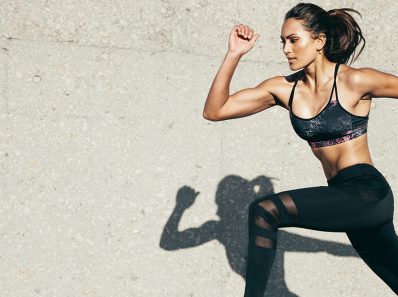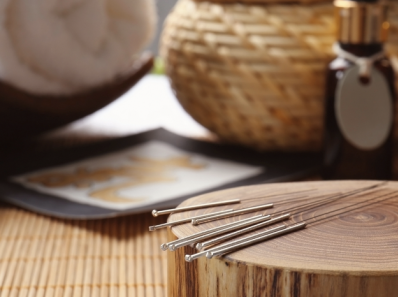All of us want to live healthy, happy lives yet many of us seem to struggle to achieve that consistently. A great place to start is with our mindset.
We often focus on actions, which are, in many ways the easy, or at least, the obvious place to begin. However, in order to shift our behaviour, we first need to work on our thoughts and beliefs – do we have an up-to-date way of thinking that supports the aim, or is there value in updating our mindset into one that’s in support of our goals?
We often complete ‘updates’ on our day-to-day technology, but we rarely think of doing the same on our human technology! Think about a belief that would be helpful to have about a fulfilling life but you aren’t yet convinced is true, for example “I am responsible for my own health” and ask yourself these three questions:
Do I believe this statement is it true?
Do I want this statement to be true?
Will I give this statement a chance to be true?
Let yourself sit with those for a little while
The question in the title is a very powerful one that reminds us we should be leading our lives – proactively making positive choices to help us live a more fulfilling and joy-filled life. At Peaceful Way Retreats we have a clear remit- to help people live healthier longer. Many people talk about a lifespan without considering their health span; we should be aiming to make our health span the same length as our life span. Who wants to live to 100 if our health span diminishes in our 70’s and our later years are filled with pain and dis-ease?
So where should we prioritise our actions to lengthen our healthspan and live our lives in a holistic way? Colin Reeve and Karen Stone, founders of Peaceful Way Retreats, suggest the following 3 areas for ecological change:
Being Present
We often spend time ruminating on the past or worrying about the future (we talk about this as looking at old photographs -the past or studying tealeaves – the future). The increasingly fast paced and tech-loaded world we live in seems to steer us to towards these two states, but we can only take action in the present. Our minds have are conditioned to seek out rewards but our modern world has programmed us to seek them out in often superficial and disconnected ways. We move quickly between thoughts, actions and feelings – how often do you consider just slowing down and connecting to where you are right now? Mindfulness has become a very popular practice in recent years and it can be a really straighforward way to bring you back to the present moment; that moment in which you can take positive action.
Top Tip: Try a mindful practice. Take a few minutes while preparing and drinking tea or another beverage, to focus on savouring the experience. Taste, smell, observe the drink, be fully present in the action of drinking. No judgements, just observations, appreciate the time you are taking in this simple act. Congratulations, you have just had a mindful experience!

Breathing
We start our lives with a breath but, as we grow, we often develop less helpful breathing habits that can lead us into undesirable states, including anxiety, overwhelm and lack of focus. The breath is a really powerful way to ground us, to help us connect with our bodies and minds and, ultimately, it connects us to our life energy. Many of us have a tendency to be ‘chest breathers’ using only the upper part of our respiratory system instead of taking the breath deeper and into the abdomen. The result is often to stimulate feelings of stress and anxiety- ever seen someone in distress breathing low, slow and deep? No, I didn’t think so!
The first step is to notice your breath – what is the quality – fast/slow, deep/high, long/short? With this attention we can start to shift into a more helpful breathing pattern – typically this is a smooth, steady, long breath that travels down to the abdomen. This type of breathing sends messages to our brain letting it know we are safe and this message then translates into a lowering of blood pressure and stress reduction. Deep breathing is not only relaxing, it’s been scientifically proven to positively affect the heart, the brain, digestive and the immune systems. Significantly, the breath can be used as a method to train the body’s reaction to stressful situations and dampen the production of harmful stress hormones.
Rapid breathing is controlled by the sympathetic nervous system, part of the “fight or flight” response and the part activated by stress. By contrast, slow, deep breathing actually stimulates the opposing parasympathetic reaction that calms us down. When you take slow, deep breaths it is like putting your foot on the break whereas when the stress response is stimulated, it’s like an accelerator speeding things up which stops you making wise decisions. You can imagine how rapid breathing isn’t helpful when you are practicing a martial art, or under attack even verbally when in a meeting. Yet breathing is a free, immediately available tool that can help you stay calm and in control.
Top Tip: Try practicing box breathing, popularised by the Navy SEALS who teach it to help navigate stressful situations. Picture a box with 4 equal sides and use it to guide your breath with a count of 4. Breathing through your nose, inhale for a count of 4, hold the breath for a count of 4, exhale for 4 counts and hold again for 4. Repeat several times until you feel yourself coming back to balance.
Mindful Movement
Movement, together with breathing are foundations of life and open us up to a life of more possibility. When we move, we connect with a part of ourselves that is the essence of being human and we unlock our mind and body to increased awareness and potential . With this movement, circulation of blood and oxygen to the brain increases resulting in better cognitive functioning and elevated mood, thus improving our sense of wellbeing and vitality.
When we exercise even moderately, our body releases endorphins, which act as a form of pain relief and creates a sense of positivity (we’ve all heard of ‘runners high’) . Exercise doesn’t have to be intense to realise these benefits – do what you enjoy, do it regularly and, if possible, buddy up with someone else or a group to help keep you accountable. Exercising regularly has been proven to help reduce stress, boost self-esteem, improve sleep and ward off anxiety.
In our style of martial art, we practice many of our movements slowly and with mindful attention. This requires more skill than moving fast where the end result is the focus – our practice is more about the whole movement that, in fact, doesn’t have an end destination. Think of it like a loop of energy- continuous, flowing energy between one or more people that brings energy to the connection, not diminishing it as is the case with some martial arts practices.
Top Tip:
Find a practice you enjoy or would like to try. Perhaps walking, cycling, yoga, swimming or gardening. Applying the first principle of being present, take time to focus on the activity and avoid using it to listen to a podcast for example. Bring all your awareness to what you are doing, move intentionally, even if it’s a slow walk, bring attention to each step- the way your feet move across the ground, how the rest of your body moves you forward. If you are practicing yoga, chose a slower style that helps you be intentional with your movement.
They above elements are not revolutionary, though they can certainly be transformative, and we aren’t suggesting they are the only ones but if we give ourselves more than about 3 things to focus on, we likely won’t do any of them. The rub is in the doing – most of us know the things that can help but struggle to implement them. We call this principle ‘Mind to Muscle’ – how to take a thought like ‘I should exercise more’ and turn it into an embodied action.
An embodied action is one that’s integrated into our daily habits and almost becomes unconscious. We teach and practice our peaceful martial art, Washindo (the peaceful mind/body way) and while teaching, we know that drawing a flip chart or telling a student what to do won’t really help them to do it themselves. They have to experience the practice so they know how it feels in their body and so can repeat it as required without relying on someone else to inform or remind them.
This is a form embodiment – uniting the physical, mental and emotional energies in a holistic way that helps you live healthier, longer.
Karen Stone – Founder, Peaceful Way Retreats



